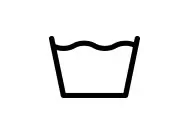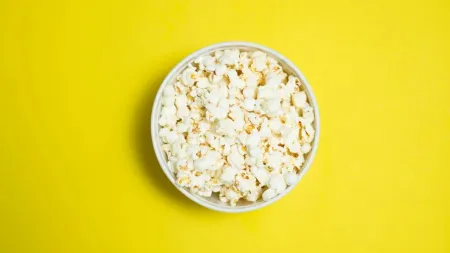Cracking the code to long-lasting clothes: Find out what those laundry symbols mean
Laundry symbols or care symbols depict the suitable methods of washing, drying, ironing and dry-cleaning to keep your clothes in their best condition. But, sometimes these tiny icons can be a bit confusing to decipher. Aditya Vikram Singh, CEO and founder of Thin Threads concurs, “Understanding basic laundry symbols can be challenging for many people because companies often prioritise selling their products over educating consumers about care labels.”
However, he admits that there’s a positive shift happening as new brands emerge in the market. “They’re not just focused on sales; they’re also promoting washing care tips on their websites,” he says.

To provide an easy guide for readers who struggle to understand what those labels mean, Singh explains some common laundry symbols found on clothing tags and their meanings:
Machine wash |
 |
This symbol looks like a small washing machine. It means you can wash the item in your washing machine. |
Hand wash |
 |
This symbol looks like a hand dipping into water. It means you should wash the item by hand in a sink or basin. |
Do not bleach |
 |
This symbol is a triangle with a cross through it. It means you should not use bleach on the item. |
Tumble dry |
 |
This symbol looks like a circle inside a square. It means you can put the item in the dryer. |
Line dry |
 |
This symbol is a horizontal line. It means you should hang the item to dry instead of using the dryer. |
Ironing |
 |
This symbol looks like an iron with dots inside it. It provides guidance on the appropriate ironing temperature for the item. |
Dry clean only |
 |
This symbol is a circle with the letter ‘P’ inside it. It means the item should only be dry cleaned and not washed at home. |
 Take note of the material used, the GSM (grams per square meter) indicating fabric weight, the type of print, and ironing instructions. (Source: Freepik)
Take note of the material used, the GSM (grams per square meter) indicating fabric weight, the type of print, and ironing instructions. (Source: Freepik)
Which fabrics are generally more delicate and prone to damage during washing?
“Some materials are more sensitive and can easily be damaged while washing,” Singh agrees. Fabrics that are delicate include silk, wool, lace, and chiffon, he says, they require specific attention to keep them looking well. Here’s how to care for delicate fabrics:
*Hand wash delicate garments in lukewarm water with a light detergent. Avoid rubbing them too vigorously.
*If you wish to wash delicate clothes in the washing machine, place them in a mesh laundry bag to prevent them from stretching or snagging.
*Hot water can shrink or harm sensitive clothes, so use cool water instead.
*Bleach should not be used on delicate materials since it might damage the fibres and cause the colours to fade.
*Instead of using the dryer, lay delicate garments flat on a clean towel to air dry. Hanging may lead them to stretch out of shape.
*If you need to iron fragile fabrics, use a low heat setting and place a clean cloth between the iron and the fabric to prevent damage.
Tips on extending the lifespan of clothing through proper care routines
Every fabric, according to Singh, has its own unique needs to maintain its freshness and longevity. Fortunately, the basic steps to care for fabrics are quite straightforward. “Just like how we check the ingredients and usage instructions when buying a new product, it’s essential to inquire or read about the fabric we choose,” he asserts.
Take note of the material used, the GSM (grams per square meter) indicating fabric weight, the type of print, and ironing instructions. Before making a purchase, it’s wise to understand the care tips provided by the seller. By keeping a watchful eye on these details, you can significantly extend the lifespan of your fabrics, he reveals, ensuring they remain vibrant and durable for years to come.
Additionally, incorporating simple habits into your laundry routine can further enhance the longevity of your clothes. For example, turning garments inside out before washing can help preserve colours and prints.
Singh recommends using a gentle detergent and washing in cold water can prevent shrinkage and damage to delicate fabrics. It is important to use different detergents because not all fabrics are the same. You should always keep at least three types of detergent: one for coloured clothes, one for whites, and one for delicate fabrics like wool and silk. Choosing the right detergent is crucial for clean, fresh laundry and keeping your clothes in top shape. Furthermore, air drying instead of using a dryer reduces wear and tear on fabrics and saves energy.
“By integrating these small yet effective practices into your daily life, you can effortlessly extend the life of your beloved garments, making laundry day a breeze,” Singh promises.
Disclaimer: The copyright of this article belongs to the original author. Reposting this article is solely for the purpose of information dissemination and does not constitute any investment advice. If there is any infringement, please contact us immediately. We will make corrections or deletions as necessary. Thank you.





